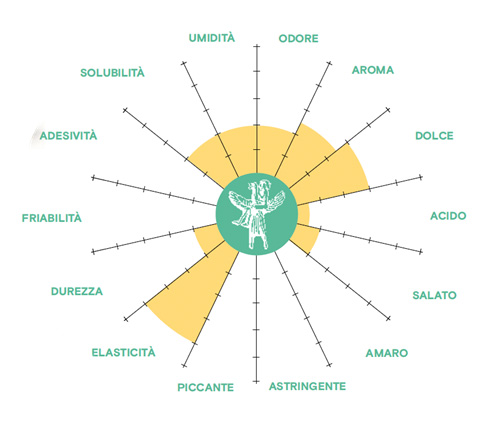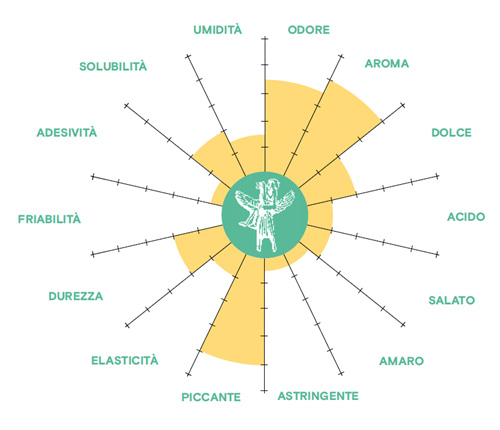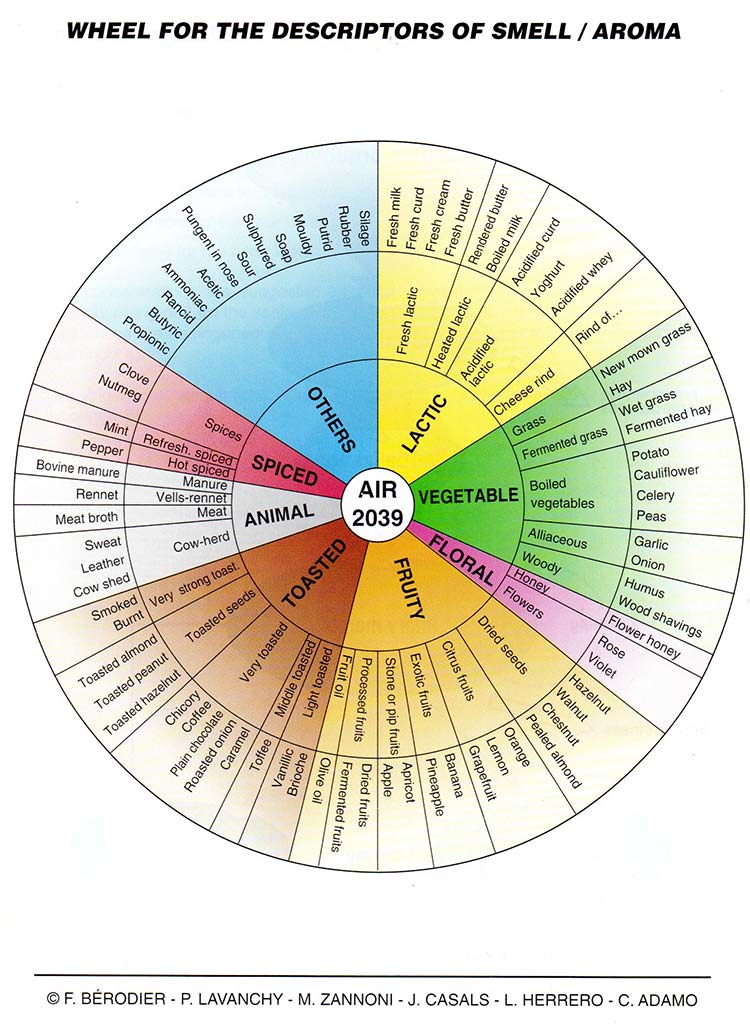Tasting tips Provolone Valpadana DOP
Home » Tasting tips Provolone Valpadana DOP

Tasting tips for Provolone Valpadana DOP cheese: how to best appreciate its sensory value
Provolone Valpadana is a multifaceted cheese in its shapes, therefore also in its sensorial values of sight, touch, smell, mouth, in which it best expresses its flavours, its aromas and trigeminal sensations.
Furthermore, the Provolone Valpadana DOP, being able to be smoked offers the consumer a further possibility of flavor combinations, aromas and taste sensations.
In the midst of these balances, the tasting technique of Provolone Valpadana DOP, like that of tasting all cheeses, is nothing other than reliving and repeating, consciously and calmly, the same moments that we usually live and repeat mechanically and hastily.
So, the cheese sample must be looked at carefully, picked up with the fingers and brought under the nose, broken to appreciate the volatile fatty acids released and then brought between the teeth and chewed carefully, appreciating its singular organoleptic characteristics. Last but not least in importance, the sensations in the mouth, detected by the trigeminal nervation: freshness, spiciness, astringency and any aftertaste.
Sensory profiles of Provolone Valpadana DOP
ETANA MODEL
by V. Bozzetti, B. Morara, M. Zannoni

Provolone Valpadana DOP Sweet
The pasta of the Provolone Valpadana DOP Sweet cheese, appears white-straw yellow in colour, with a solid paste.
To the touch it appears elastic, tending to resume its shape if pressed or curved and, of limited hardness (1.5) but with excellent elasticity (4). To the nose it offers the typical smell of milk, enriched with hints of butter (2); its typical sweet flavour (3) emerges in the mouth, where it dissolves easily in saliva (2) to express the best lactic-vegetal aromatic descriptors (2.5).
Just the right amount of salty (1) In some mountain products, fruity aromatic compounds may also be present.
The easy solubility (2) of the cheese and the modest humidity (2), after chewing leaves the mouth fresh, ready to welcome a perfect match according to the different schools of thought.
Provolone Valpadana DOP Spicy
The Provolone Valpadana DOP Spicy, depending on its maturation, appears straw yellow in colour to reach shaded reflections, with a solid paste with slight cracks and/or a solitary eye.
To the touch it is medium hard (2), slightly elastic (1) and slightly adhesive (0.5); but it is the smell (3.5) that attracts the taster. In fact the olfactory descriptors (4) are complex, including in the lactic base also the animal component of the rennet paste.
In the mouth, it melts well (2) offering the basic flavours in balance (sweet 2, acid 1, salty 1, bitter 0.5), to bring out a strong spicy trigeminal sensation (4), sometimes accompanied by a modest astringency (0.5).
However, it will be the strong and persistent aroma (4) that will triumph in the mouth, immediately ready to accept a drop of good wine.
ETANA MODEL
by V. Bozzetti, B. Morara, M. Zannoni

Sensory values: Sight
Looking at the cheese you will notice the characteristics of the rind and, when cut, of the paste. The most attentive will also notice the variation of these characteristics from the rind to the center of the cheese and you will be able to perceive and appreciate its color, the continuity or discontinuity of the surfaces, the presence or absence of typical elements such as the eyes (rounded or irregular), distributed uniformly or unevenly, the flakes and tears (horizontal cracks), crystals (concentrations of amino acids in the longer-matured forms), droplets of water (in relation to the degree of humidity) or oil (in relation to the fat present).
As regards colour, Provolone Valpadana DOP has shades tending towards straw yellow, with references towards white in the freshest cheeses, towards intense yellow in medium-aged cheeses and towards brown in very aged cheeses.
Sensory Values: Touch
Touching the cheese with your fingers provides important sensory information about its appearance, especially on the cut surface.
In fact, by passing your index finger over the slice of cheese you can evaluate how smooth or rough the surface is, when there are grains on the surface.
The tactile sensitivity also detects the degree of humidity of the cutting surface.
By touching the cheese, the taster evaluates the elasticity of the cheese paste and also its hardness, which will then be confirmed by the tactile sensitivity of the teeth, before chewing.
Sensory values: The sense of smell
By smelling vigorously and breaking the cheese under the nose, you will be able to appreciate, in all its complexity, the smell and its overall intensity, then moving on to the identification of the families of odors (lactic, vegetal, floral, fruity, toasted, animal, spicy, other) and, with the appropriate experience and professional specialization, you will also be able to identify the various subfamilies and individual olfactory descriptors.
Sensory values: Taste
By chewing cheese, calmly, you discover an infinite number of wonders!
The initial and precious indications come before the actual chewing, when the cheese is placed between the teeth, or from the jaw pressure needed to deform and chew the cheese. We will have a whole series of sensations and perceptions relating to elasticity (ability to return to the initial shape after stress), hardness (ability to resist deformation), deformability (ability to internal movements of the material), friability (ability to be reduced to pieces), adhesiveness (ability to adhere to contact surfaces). Chewing, or rather optimal chewing, will bring the temperature of the cheese to our body temperature, releasing in the meantime all the aroma present in the cheese itself and perceivable in three dimensions: intensity, quality and persistence. The aroma is perceivable through the olfactory organ via the retronasal route, during the exhalation phase.
The wheel of aromas
Elasticity, hardness, deformability, friability, adhesiveness are the pentagram of the structure, from which the olfactory-gustatory harmony of cheeses flows.
The four basic tastes (sweet, sour, salty and bitter), the trigeminal sensations (spicy, astringent, warming, refreshing) and sometimes the aftertaste (olfactory-gustatory sensation, following swallowing, which differs from the previous ones).
The wheel of odor and aroma descriptors classified into families, subfamilies and single descriptors is always the same.
The aroma wheel is made up of three concentric circles, of different colours and divided into several aroma categories such as fruity, floral, vegetal…
In the inner circle the categories are partly divided into subcategories such as stone fruit, berries, citrus fruits, exotic… The outer circle is made up of 65 individual attributes, uniquely characterised.
These attributes are an important reference point for the characterization of the aromatic diversity of cheeses and of great help in drawing up an appropriate aromatic profile.




